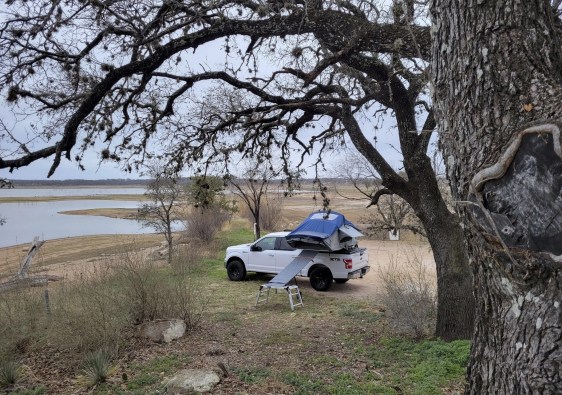In our last post we examined some features of our BTECH GMRS-50X1 that are useful for off-road and overland use, including the ability to receive both VHF and UHF frequencies – 136-174.99 – 400-520.99 MHz – and to monitor up to 3 of those channels while simultaneously monitoring the GMRS channel you’re using. We’ve found that a good use of the GMRS-50X1’s “Quad Watch” is monitoring USFS or US Forest Service radio frequencies, as well as National Park Service radio frequencies in areas where we venture off-road.
Why Monitor US Forest Service, BLM and National Park Service Radio Frequencies?
It’s perfectly legal to monitor National Forest (USFS), Bureau of Land Management (BLM) and national and state park radio frequencies. Many forest service districts still use VHF radios – along with repeater stations that are often placed on mountaintops – to provide communications between headquarters and rangers in the field. By listening to their radio conversations, you can learn a great deal about conditions in your area, including fire danger, rock slides and other hazards. You may be able to avoid some of these hazards, or choose a better route or campsite, if you listen in for a few minutes each day to these channels.

Our Experience In The Gila National Forest
This past summer, we camped in several spots in the Gila National Forest. At one of them, a few miles up the road from the Mogollon ghost town, we’d just set up camp that evening and were listening in to the Glenwood Ranger district talking to a ranger in our area. Before our trip we’d programmed our Btech GMRS-50X1 with 169.975 MHz, the frequency used as the output by all the US Forest Service repeaters in the area.
During our driving around that day we’d only heard a few calls, mostly just those between staff and rangers checking in with dispatch, and honestly we really hadn’t been paying much attention to any of it, until we noticed a change in the tone and urgency of the traffic.
We turned up the volume a bit and soon learned that our area was about to be evacuated, due to a fast moving fire that had picked up speed with changing winds. We quickly broke camp and moved on farther upwind, to near the Cosmic Campground International Dark Sky campsite, where it was still safe to camp.
Since then, we’ve always listened in on US Forest Service and NPS radio frequencies wherever we travel, including on a recent trip Padre Island National Seashore in Texas. There you may hear about sightings of nesting sea turtles by listening to 164.800 MHz, which is used by the Turtle Patrol.

Where To Find USFS and National Park Radio Frequencies
Our go-to source to find USFS and National Park Service radio frequencies to program into our GMRS-50X1 is the RadioReference Wiki.
There you can find the radio frequencies used by state and national parks, wild land firefighters and even search and rescue teams. Note however, that some of the information found on RadioReference Wiki may have become outdated, as some of the larger national parks may have switched over to more modern UHF trunking systems, which unfortunately can’t be monitored by most radios. Fortunately for us, most of the USFS or US Forest Service radio frequencies listed are still in use across the country.

Which Forest Service and Park Frequencies Should You Monitor?
When trying to decide which US Forest Service channels to monitor, look for the most commonly used frequency, that’s also listed as the output frequency any repeaters in the area. Often the forest service will use the same frequency – such as 169.975 Mhz in the Gila Forest – for simplex operation between mobiles, as well as for the output frequency of powerful mountaintop repeaters.
How To Program Scanning Channels Into Your BTECH GMRS 50X1
Once you’ve found the frequencies used by the forest service in the area you’re traveling to, you can either program those into your radio manually – as seen below – or using BTECH’s software and a computer.

Never Transmit On Forest Service, Park or Fire Frequencies
If you’re using a radio that’s capable of operating on these frequencies, be sure to avoid accidentally transmitting on them, as doing so is highly illegal. Even if you feel that you may have useful information to share, it’s against the law to transmit on any US government or law enforcement frequency. Ham or amateur radio operators may have some leeway for doing so, but only in life or death situations – per the language in Subpart E of Part 97 of FCC rules:
§ 97.403 Safety of life and protection of property.
No provision of these rules prevents the use by an amateur station of any means of radio communication at its disposal to provide essential communication needs in connection with the immediate safety of human life and immediate protection of property when normal communication systems are not available.
There’s no special dispensation for licensed GMRS users under Part 97, which is one good reason to get an amateur radio license. We’ll have more on how to easily get a “no code” amateur license in an upcoming post, so stay tuned.
Related Posts: How to Get a GMRS Radio License
Full Disclosure: This post may include affiliate links.





